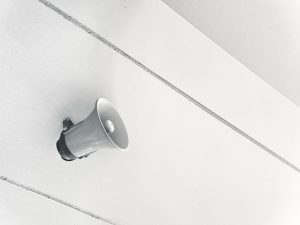In the industrial sector Energy Peak Demand Reduction is an important topic. With the increase of energy costs in the past months, the topic is even more pressing. But what is it all about and how can IoT technology help?

Above is a simplified graph of electricity consumption over a day. The red line depicts a production line curve, starting in the morning, coming to a hold at lunch time and ending when the shift is over. The blue line shows a commercial kitchen electricity consumption, starting in the morning when all the equipment is switched on, operating till the evening. Lastly, the green line depicts an airport with the unique effect, that during lunch time all the electrical cars of the airport are connected to the grid to be charged.
It is important to note, that the electricity bill is based on the peak consumption in a specific time frame. As a result, using energy with extreme peaks, like the airport does, the overall electricity bill will be much higher. Even though the complete consumption over the day stays the same.
Why does the elecritry cost change throughout the day?
This can be explained by taking a closer look at the three different energy production systems:
- Base load power plants (Grundlastkraftwerke)
are operated, as far as possible, around the clock at full load. They can generate electricity relatively cheap but can only be regulated slowly (e.g. nuclear or coal power plant).
- Medium load power plants (Mittellastkraftwerke)
vary their performance according to the foreseeable power demand according to a predetermined daily schedule. They have an average levelled cost of electricity and can be regulated over a wide power range, but the control works with a certain delay. They can only react to rapid changes in electricity demand to a limited extent (e.g. gas power plant).
- Peak load power plants (Spitzenlastkraftwerke)
can quickly follow changes in performance in the network. Gas turbine power plants achieve change speeds of up to 20% of the rated output per minute and have a start-up time of only a few minutes. The power can be regulated between 20% and 100%. They are used to adjust the fluctuations in power demand or generator feed-in that cannot be regulated by other types of power plants.
Peak load power plants are usually only used for a few hours per day: during consumption peaks, with strong load increases in the grid and with unplanned fluctuations in electricity consumption and generation.
Due to the consumption of natural gas or pumped energy, the electricity they generate is significantly more expensive than that of other types of power plants.
How do we solve this problem?
The easiest way is to shift consumption over time if possible. In the case of the commercial kitchen, a solution might be avoiding to switch on all the machines at the same time in the morning.
This is where IoT comes into play.
IoT can help you create transparency by measuring the consumption of every machine throughout the day. This is the data gathering part. The second step is to control the machine by switching them off and on automatically in the desired sequence.
In that way you can avoid unnecessary energy consumption peaks and reduce your electricity bill dramatically.
The CIS Solution product I/O.nite can handle this approach by reading data and controlling machines via a variety of interfaces.
Contact our experts today, to find out more!
info@ionite-solution.com




Comments are closed.